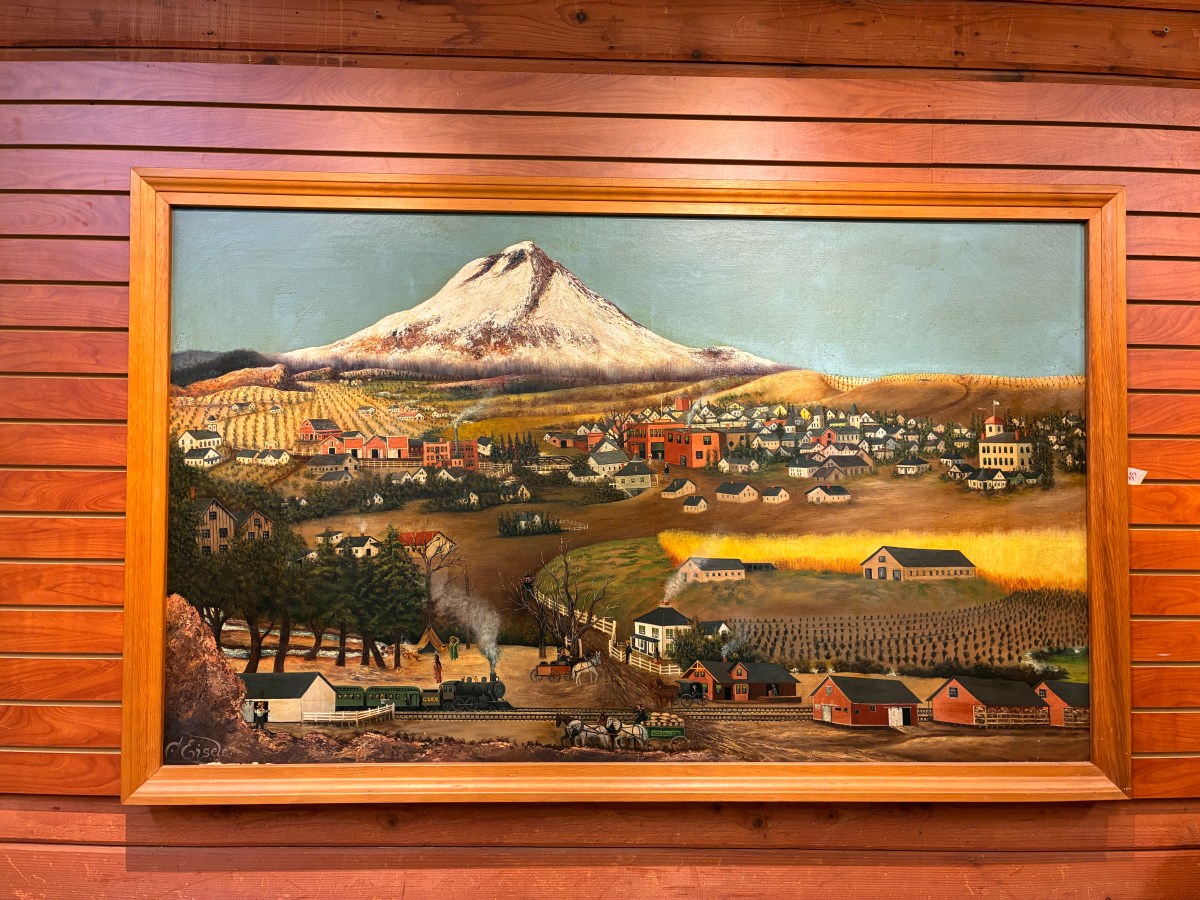
The July 14 auction catalog from O’Gallerie features an early Oregon painting by the little-known but intriguing artist Charles Christian Eisele.

Eisele is briefly profiled in William Gerdts’ Art Across America: Two Centuries of Regional Painting (Volume III) where he appears among a dozen artists in the Oregon chapter.
Christian Eisele, another able landscape painter, worked in Oregon at the end of the century. Eisele, who appears also to have been active in Colorado and Utha, is known for his rendering of local scenery, such as View of the Dalles, Mount Hood, and Mount Saint Helens in the Distance.
The German-born Eisele adopted the panoramic format favored by many western landscape painters and applied it to city views; another example is his detailed Logan, Utah, painted in 1892. The following year Eisele was commissioned by the World’s Faire Commission of Utah to send a large painting of Salt Lake City to the World’s Columbia Exposition in Chicago.
A succinct entry in Oregon Painters – The First Hundred Years (1859 – 1959) by Ginny Allen and Jody Klevit tracked his life with more precision
Christian Eisele was an itinerant painter who first appeared in Oregon in 1888. His oil paintings were shown at the Portland Mechanics Fair and the Industrial Expositions. He operated the Omaha Exchange Saloon in Portland from 1890 to 1901. He reappeared in Oregon in 1903 1905, and 1906 and again from 1911 to 1914.
Eisele died in Oregon City in 1919.
His earlier Utah works from the 1880s display a mastery of the Hudson River School vocabulary—majestic, atmospheric, and finely detailed. Auction records suggest there is consistent market interest in this period of his work. In contrast, Eisele’s later Oregon paintings show a noticeable shift in style—marked by a certain naivety and mannerism. Similar works offered through O’Gallerie in the past have not commanded prices as high as the earlier works.
It remains unclear whether this stylistic change stemmed from declining health or simply reflected regional taste. After all, Oregon at the time was still a rugged frontier, and its wealthy patrons may have had little desire to be reminded of the untamed nature or the city’s nickname as “Stumptown.”
That said, early naïve paintings are often valued for their documentary quality—for their ability to capture the long-lost details of historical places. In this painting, for instance, Mount Hood looms prominently in the background. Its unique shape suggests that the town depicted at the mountain’s base lies east of Cascade Locks. While the auction house description proposes either Hood River or The Dalles, a closer look at the train in the foreground reveals a telling clue: a detailed C.S.R.R. logo, referencing the Columbia Southern Railway, which only operated between Biggs and Shaniko—a 69-mile route that did not include either town.
Nor would either Biggs or Shaniko have appeared as bustling as the town in the painting during the period in question. It’s likely that Eisele created a composite scene, blending iconic landmarks with elements of industrial progress to craft a romanticized vision of Oregon’s development.

This composite nature is evident in the painting’s puzzling proportions. Most notably, a Native American figure standing in front of a tipi appears significantly larger than the train chugging by—whose passengers resemble miniature dolls. The overall effect is both whimsical and surreal, a folk-historic tableau filtered through the lens of memory and myth.
Whether or not this painting commands a high bid on July 14, it is a fascinating artifact of an artist at the crossroads of tradition and change, grappling with how to portray a new American West.







